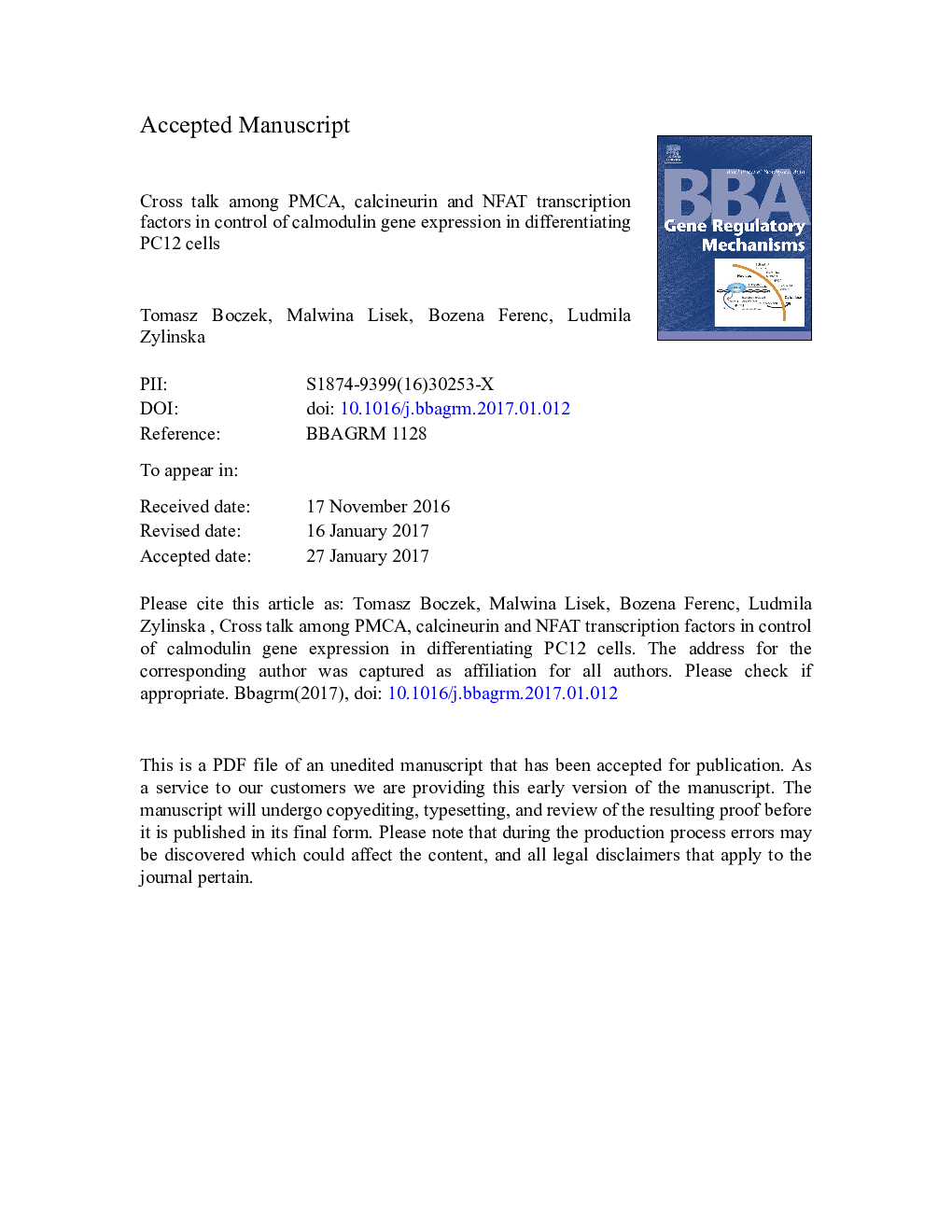| Article ID | Journal | Published Year | Pages | File Type |
|---|---|---|---|---|
| 5507776 | Biochimica et Biophysica Acta (BBA) - Gene Regulatory Mechanisms | 2017 | 28 Pages |
Abstract
Brain aging is characterized by progressive loss of plasma membrane calcium pump (PMCA) and its activator - calmodulin (CaM), but the mechanism of this phenomenon remains unresolved. CaM encoded by three genes Calm1, Calm2, Calm3, works to translate Ca2Â + signal into changes in frequently opposite cellular activities. This unique function allows CaM to affect gene expression via stimulation of calcineurin (CaN) and its downstream target - nuclear factor of activated T-cells (NFAT) and to terminate Ca2Â + signal by stimulation of its extrusion. PMCA, which exists in four isoforms PMCA1-4, may in turn shape the pattern of Ca2Â + transients and control CaN activity by its direct binding. Therefore, the interplay between PMCA, CaM and CaN/NFAT is highly plausible. To verify that, we used differentiated PC12 cells with reduced expression of PMCA2 or PMCA3 to mimic the potential changes in aged brain. Manipulation in PMCAs level decreased CaM protein in PMCA2 or PMCA3-reduced lines that was accompanied by down-regulation of Calm1 and Calm2 in both lines, but Calm3 only in PMCA2-reduced cells. Further studies showed substantially higher NFATc2 nuclear accumulation and increased NFAT transcriptional activity. Blocking of CaN/NFAT signalling resulted in almost full CaM recovery, mainly due to up-regulation of Calm2 and Calm3 genes. Moreover, higher occupancy of Calm2 and Calm3 promoters by NFATc2 and increased expression of these genes in response to NFATc2 silencing were demonstrated in PMCA2 and PMCA3-reduced lines. Our results indicate that decrease in CaM level in response to PMCAs downregulation can be driven by CaN/NFAT pathway.
Related Topics
Life Sciences
Biochemistry, Genetics and Molecular Biology
Biochemistry
Authors
Tomasz Boczek, Malwina Lisek, Bozena Ferenc, Ludmila Zylinska,
